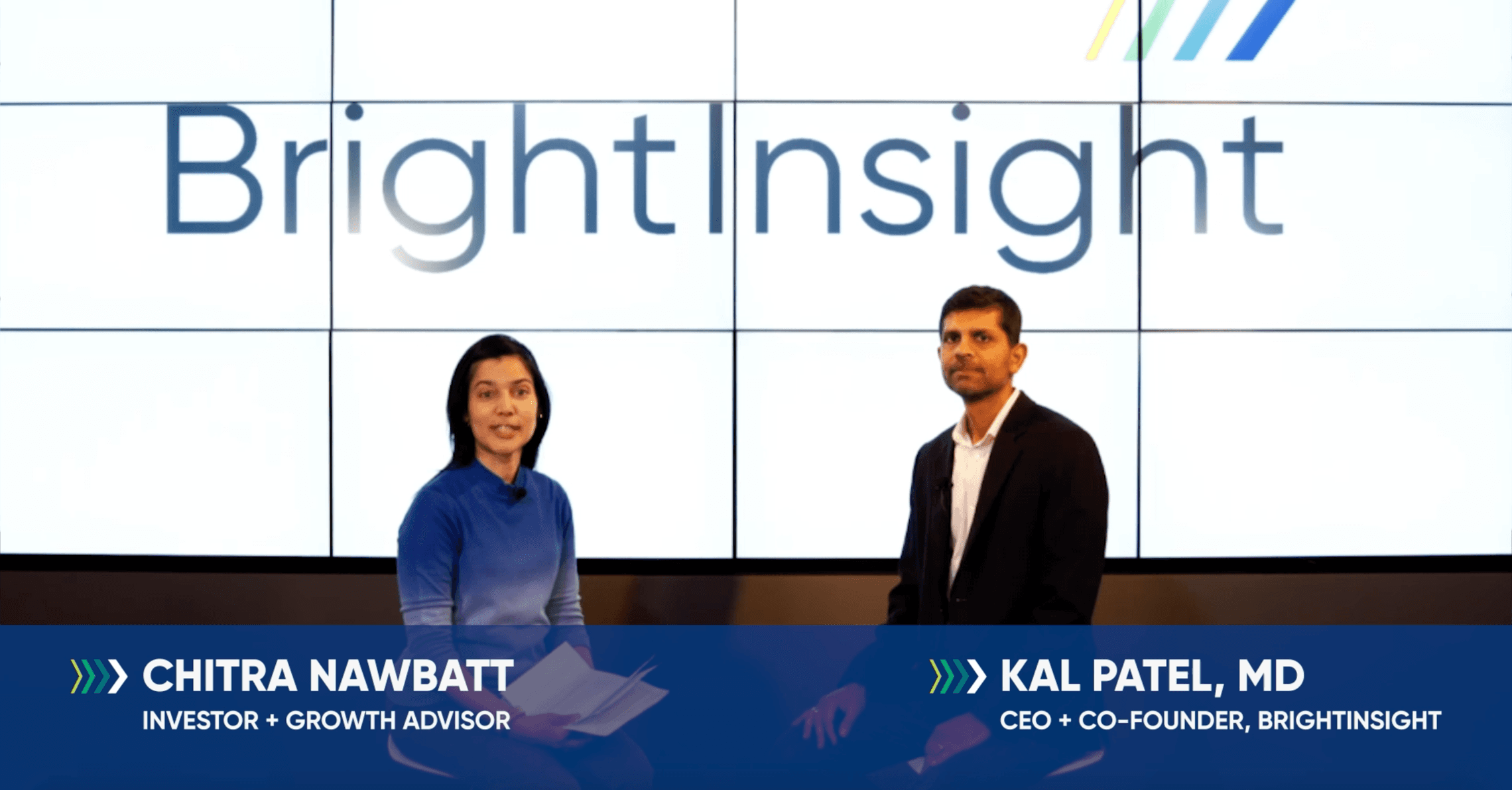
In the latest installment of our BrightInsight Digital Health C-Suite Series, we interviewed our own CEO & Co-Founder, Dr. Kal Patel about his inspiration for creating the company, what sets it apart in the vast sea that is digital health, and how that approach has proven out over time. Here’s a recap of the discussion. Watch the interview, or read on for a recap.
BrightInsight is the leading global platform for pharmaceutical and medtech companies that are building regulated digital health solutions, freeing them from bespoke, from-scratch builds that take a ton of time—and a lot of risk. “With our system, our customers get a proven platform with configurable software tools that let them build fully compliant, private, secure solutions—and do it really quickly.”
“We built this company because, during my previous time at Amgen, I found that creating these types of solutions took many years, a lot of money—and frankly, we didn't know what we were doing, because we weren’t a software company, we were a drug company.”
BrightInsight was built to help digitize pharma and medtech products to drive better clinical outcomes for patients, and better business results for our customers.
There's a total alphabet soup right now in digital health, with acronyms and buzzwords flying around willy-nilly, and “platform” is one of them.
“The real difference at BrightInsight is that we're truly a platform company. And what I mean by that is from day one, we’ve been building proven, scalable and configurable infrastructure that is totally compliant with all requirements from a regulatory, privacy and security perspective.”
That means that BrightInsight customers can build a regulated digital health solution, whether that’s an app, an algorithm, a connected medical device, a connected combination product or a smart diagnostic. “Basically, anything in that software as a medical device space (SaMD), you can build it and get it to market at a speed and a level of compliance, robustness, that you just can't do any other way.”
Take for example CSL Behring and its flagship drug, Hizentra, which is used to treat Primary Immune Deficiency (PI) or Chronic Inflammatory Demyelinating Polyneuropathy (CIDP) in adults and children. BrightInsight built an app for CSL Behring in six months and launched it to tremendous adoption within that patient community, including 4.6 (out of 5) rating in Apple’s App Store. “It's doing that because it solves a real problem for their patients: ‘How do I track at-home infusions for my therapy?’ The app is also producing valuable data for CSL Behring to better understand the patient journey, including capturing over 800K electronic patient reported outcomes and over 160K self-administrations of the drug in a patient’s home.
The Hizentra app, first launched in the U.S., is now launching across the globe in CSL Behring’s leading markets, including Japan. Additionally, BrightInsight is developing different digital solutions across several disease areas. “We can do for other use cases what we did for Hizentra, at the same level of speed, robustness and global adoption, because we take a platform-first approach.”
Getting granular: the metrics
The data generated by digital solutions enables our biopharma and medtech customers to track a host of important metrics, including not only adoption rates but the percentage of patients who continue to use the product. With the Hizentra app, after one year, 89% of users were still using the app—nearly double the industry average of 45%; additionally, the app tracks how often patients actually engage with the solution, the kind of data they’re actually storing, and when they’re accessing it.
“Those are the kinds of proof points that show that the app's users are clearly seeing the value. Otherwise, they wouldn't be using the product, week in, week out, the way that the data show that they are.”
Fundamentally, any digital health spend has to achieve two things: deliver clinical benefit, and drive return on investment (ROI) for the customer. “If it's not doing those two things, I'm not sure why you're doing it.”
That means building solutions to accomplish one of three things:
“What we do with our digital health solutions is attack one, two or all three of those problems for any given drug that we're working with. If we do that, we drive ROI.”
User adoption at scale is fundamentally about two things: solving a pain point for the end user, the patient, and driving awareness among that patient population.
"I'm just shocked by how many digital health solutions don't actually solve a problem that the patient or the user identifies. We spend a lot of time working with our customers, partnering with them to ensure we deeply understand the pain points for the user, and how digital can, in a meaningful way, address those pain points.” With the Hizentra app, that approach led to the strong adoption and long-term utilization rates for the app.
The tactics and techniques for driving awareness depend on the disease in question. In the cases of rare diseases, for example, often there are existing patient communities that are already oriented toward finding and trying solutions and sharing them with others in that community.
In other areas, such as diabetes, there are a lot more solutions and a lot more noise. Overcoming that requires marketing dollars. “You’ve got to think about effectively educating the physician community, or the patient community about the solution to drive adoption. We partner with our customers at both ends of that.”
Find all interviews from our Digital Health C-Suite Series on our YouTube Channel.